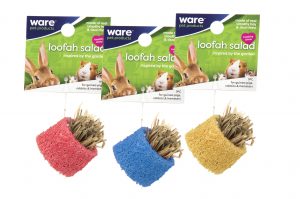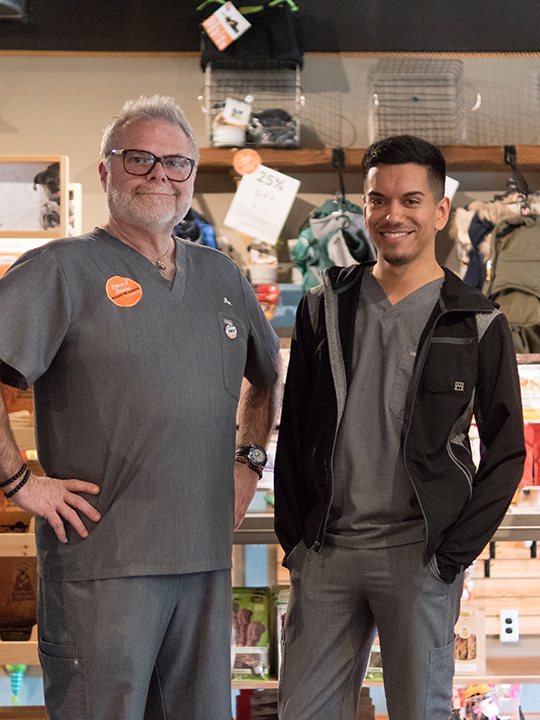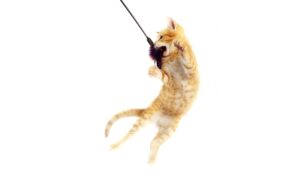The State of the Pet Industry: Retailers Get Real
Alexandra Wepner //June 27, 2018//
As the saying goes, “change is good.”
From the way that pet owners view their animals to the information they expect to see on product labels, one might say we’ve entered a new era of pet ownership. And retailers do not consider that to be the only driving force behind the current state of the pet industry. In fact, the players in the pet market have been shifting significantly in a series of mergers and acquisitions since the beginning of last year.
In April 2018, the J.M. Smucker Company acquired Ainsworth Pet Nutrition and, with it, the Rachael Ray Nutrish brand. Less than a year before that, Ainsworth Pet Nutrition had acquired Triple T Foods, a family-owned, super-premium pet food co-manufacturer based in Kansas. In March, Petmate acquired GAMMA2, best known for its Vittles Vault range; Kent Pet Group acquired FibreCycle Pty Ltd to strengthen its hold on the litter category.
Also in April 2018, General Mills announced it had acquired Blue Buffalo Pet Products in an all-cash transaction that represents an enterprise value of approximately $8 billion. According to a press release from General Mills, Blue Buffalo will be incorporated into General Mills’ financial results beginning in fiscal 2019.
At the same time, the industry has seen its fair share of expansion and/or rebranding. To celebrate the company’s 25th anniversary, Ware Pet Products announced in April that it would be transitioning from the Ware Manufacturing brand, introducing a new logo and launching a new website, www.WarePet.com. Ware Vice President of Product Development and Sourcing John Gerstenberger said the move aimed to “better reflect who we are and who we want to connect with: people that celebrate pets as a part of the family.”
Gregori Lukas, director of education at Lukas & Berube Healthy Pet Markets, feels a responsibility regarding keeping up with these changes. He co- owns his store in Montclair, New Jersey, with his business partner, Marc Berube.
“Things are changing every day, and formulations are changed every day, and that affects our animals,” he said. “It’s my job on the front lines to realize what’s going on behind the scenes because the consumers don’t always see it.”
And those are only examples involving brands. Distributors have been growing as well, one example being Animal Supply Company’s recent acquisition of Bark to Basics, a family-owned business that serves independent retailers, day cares, kennels, animal hospitals and groomers in six states. As recently as March of this year, Central Garden & Pet purchased General Pet Supply, a Midwestern U.S. distributor of pet food and supplies. The move gave the company what Central Garden & Pet CEO and President George Roeth called “unparalleled distribution capabilities in the pet industry.”
But perhaps no acquisition affected independent pet retailers as directly as the one that took place in April 2017. That month, PetSmart, Inc., announced it would acquire Chewy, Inc., a popular online pet retailer. In response, brands like Champion Petfoods and Fromm announced they would withdraw their products from Chewy’s virtual shelves to avoid competing with independent brick and mortar stores.
Of course, the pet industry is an ever-changing one, and always has been. In the face of each new development, retailers are left to figure out where the pet industry stands and where to go from there.
Competing with a Click
Lukas suggests that the brands a store owner chooses to offer is key. He points out that his store’s specialized and often holistic nature has protected it from the biggest challenges posed by online retail. In addition, some of the smaller companies that produce the items stocked by Lukas & Berube Healthy Pet Markets are careful not to disadvantage their independent, specialty retail partners.
“A lot of smaller [manufacturers] are being mindful of the stores that are hustling and bustling like we  are to provide us with exclusive products, which we gratefully appreciate,” he said.
are to provide us with exclusive products, which we gratefully appreciate,” he said.
According to Lukas, his staff provides a shopping experience customers can’t find online.
“The majority of the time, people are also looking for one-on-one attention in regards to education, and you don’t get that online,” he said. “Since we are focused on education, I think that plays a big role in people still coming in to purchase from us instead of online.”
Kim Coletti, owner of B.I. Barkery in Bainbridge Island, Washington, built the online component to her store when she opened its doors in 2012. Two years later, she added an e-commerce function, though she says now that much fewer of her sales than one might expect come from the internet.
“I thought I should have it just so I wasn’t going to be left out in the cold because there’s so many online ways to get stuff now,” said Coletti, whose store is frequently visited by tourists on ferries from Seattle and the surrounding areas. “I thought, because we do have a big tourism industry in Bainbridge [that] the people that shopped here can go online and repurchase the things that they really like.
“I get 1 percent of my sales from that,” she said. “All the rest are walking through the door. Tourists come or call after they get home from wherever they live [and] sometimes we just end up doing it the old fashioned [way] over the phone.”
There’s several reasons customers choose to forego the supposed convenience of online shopping. According to a consumer survey published in 2017 by Retail Dive, 62 percent of the 1,425 respondents said they choose brick and mortar stores because they want to “see, touch, feel and try out items.” The second most popular response, at 49 percent, was the ability to take items home immediately, followed by an easier return process (20 percent) and the opportunity to ask associates questions (13 percent). Only 7 percent said they exclusively shop online.
Similar to the owners of Lukas & Berube, Coletti surmises that the unique products she offers—which often have a Pacific Northwest charm—have only helped her store compete with online retailers, even after her tourist customers return home.
“Where we are in the Pacific Northwest, a lot of the treats, I rather source from nearby,” Coletti explained. “Again, because locals like that and, having the tourism side of things, people want to take home something that reminds them of where they just were, whether it’s salmon jerky for their dog or a fun picture that has a Cavalier King Charles [and] says ‘Bainbridge Island’ on it.”
World Wide Fish & Pets, based in New Haven, Connecticut, is owned by Peter Sachs, who has had experience in the pet and aquatics industry for years. He recalls using the internet to drive his business as early as the 1990s, and posits that he was “probably one of the first in the United States to ship corals.”
After taking a break from the aquatics business for about eight years, he jumped back in—this time, with a team that could help him capitalize on ecommerce in conjunction with his brick and mortar store. When Pet Age spoke to Sachs, he was getting ready to launch a new website.
“I think it’s essential in all businesses,” Sachs said. “I don’t believe that Main Street has to disappear; your local chocolate shop or your little stores, I believe if they have a good online component, can have their local business in the center of town and, between the mail order and the store, they can do well. Things are no different now than they’ve ever been—business changes and you have to adapt.”
Paying Attention
While Sachs seems to maintain a laidback perspective of the ebbs and flows of business, he’s paying attention to what transpires in the industry. And if a product is no longer profitable due to competition, he wastes no time finding products that are.
“It’s pretty easy to find a small company to deal with that has a good product, but you cannot make the mistake of just taking something else to sell,” Sachs said. “You have to use your experience in the pet industry to find a good food that fish eat well and then you can start promoting it.
“Some lines you’re just not going to be able to carry if a company gives huge discounts to Amazon and you are buying it at 20 percent above what Amazon is selling it for,” he said. “Get rid of it and promote something else. If people are coming in and asking for it, well, then find something to sell them, to turn them on to.”
Lukas highlights transparency as one reason he pays close attention to the pet industry, which is almost constantly changing. And the numbers would indicate that his customers appreciate his vigilance. According to the 2016 Label Insight Transparency ROI Study, 73 percent of consumers said they were willing to pay more for a product that “offers complete transparency,” and many are willing to switch brands in pursuit of more transparency. In short, customers want to know as much as possible about the products they buy.
“I’m huge on [transparency] and if something… isn’t as talked about I definitely ask questions and I have to know exactly where my products are coming from. [Whether] it’s a treat or a little cat toy, I need to know where they’re made [and] how they’re sourced,” he said, also pointing out that his customers, who care about the same things, might not realize that some smaller brands have larger parent companies.
B.I. Barkery primarily stocks what Coletti calls “the fun stuff”: toys, treats and supplies. For this reason, the store has so far remained unscathed by the rash of pet food recalls that have recently plagued the pet industry. As of April 2018, the Food and Drug Administration’s website listed 23 pet food recalls, in some cases affecting more than one brand each. In the FDA’s archives, there were only 10 pet food recalls listed for the same time period in 2017; in 2016, there were only three.
“One theory, put forth by an executive speaking to the Miami Herald in March after his product was  recalled, said it’s a cyclical FDA focus that’s now on pet food,” wrote David J. Neal, reporting for the Miami Herald in April 2018. “Another theory put forth is the FDA has a zero-tolerance [policy] for salmonella or listeria in pet food, which it doesn’t for human food likely to be cooked.”
recalled, said it’s a cyclical FDA focus that’s now on pet food,” wrote David J. Neal, reporting for the Miami Herald in April 2018. “Another theory put forth is the FDA has a zero-tolerance [policy] for salmonella or listeria in pet food, which it doesn’t for human food likely to be cooked.”
Coletti does, however, look out for news regarding certain brands being purchased by other companies, as she has strong opinions about which brands she likes to support. She recalls a recent situ ation in which a treat brand she had been offering at the time was acquired by another company. She chose to offer a different product better suited to her ideals.
“I kind of thought, you know, that’s a big, big company that I don’t need to be supporting and I found a very similar product… made in more of a small batch way and my customers ended up liking that better,” she explained.
The Challenge Ahead
While every business owner faces challenges in keeping their doors open, those challenges likely differ from one retailer to another. Particularly in the pet industry, there are so many niches a store could occupy, from pet costumes and apparel to natural or holistic remedies.
For Lukas & Berube, the focus is raw nutrition, and that in and of itself can sometimes pose a challenge as the discussion surrounding raw pet food spreads. Lukas, however, is confident.
“Once that customer comes in here and they actually sit down and learn some of the ‘common sense knowledge’ that we’re teaching, then it starts to make sense,” Lukas said. “I’ve actually had the opportunity now to speak with a few… veterinarians and everyone’s slowly coming to the idea that healthier food is just common sense. So it’s not battling the big veterinarians, it’s more kind of enlightening everyone in a positive way because they see results with the animals.”
Calling raw food the “fastest growing segment in the industry,” Lukas recognizes that changes happening in today’s pet industry can sometimes give rise to tension. He views certain changes as inevitable, and hopes that pet professionals can come together in what he sees as a new era of pet nutrition. After all, in a March 2018 Petfood Industry story, writer Tim Wall cites data from the market research firm GfK showing that, between 2016 and 2017 alone, frozen raw pet food sales grew by 15.9 percent.
“I think there is a little bit of this turbulence in regards to everyone just getting along,” he said. “Again, we’re striving for better, but I think for that to really happen, everybody needs to have an open mind, everyone needs to be in constant communication and we can’t fight each other.”
Though he acknowledges the challenges that lay ahead, Sachs is also optimistic.
“I think the cream always rises to the top,” Sachs said. “I think independent stores that run their stores well, that have good customer service [and] are watching their prices [will flourish].”
Like Sachs and Lukas, Coletti recognizes what most pet retailers likely also know: that the pet industry is one in which new, smaller brands with good products can compete in the independent pet retail market just as much as any other brand—especially when they lead with what today’s customers seem to want, such as simple, locally sourced ingredients and USA-made products.
The rebranding efforts currently taking place in the pet industry may be viewed as proof that manufacturers’ products are evolving with the market, right down to the packaging. Ware Pet Products, in conjunction with the launch of its new website and logo, has updated its product packaging.
“Ware’s product assortments reflect a changing industry and a changing face of retail,” Gerstenberger  said. “Today’s pet parents are seeking convenient, functional and affordable pet product solutions with clear to understand packaging. Packaging must target the large baby boomer buying market, but also the millennial pet parent customer who has changed the retail climate (brick and mortar and also online).”
said. “Today’s pet parents are seeking convenient, functional and affordable pet product solutions with clear to understand packaging. Packaging must target the large baby boomer buying market, but also the millennial pet parent customer who has changed the retail climate (brick and mortar and also online).”
Ultimately, Coletti is optimistic. After all, the pet industry is often referred to as a “recession-proof business,” and studies show that the economy has no influence on the spending habits of most pet owners (73 percent, according to APPA).
“Yes, there’s challenges, there’s competition and things like that,” she concluded. “But you know, somebody might have just gotten a new puppy, and they haven’t had a pet for a while [and] they shower them with love and attention. You don’t really need to do much.”




















